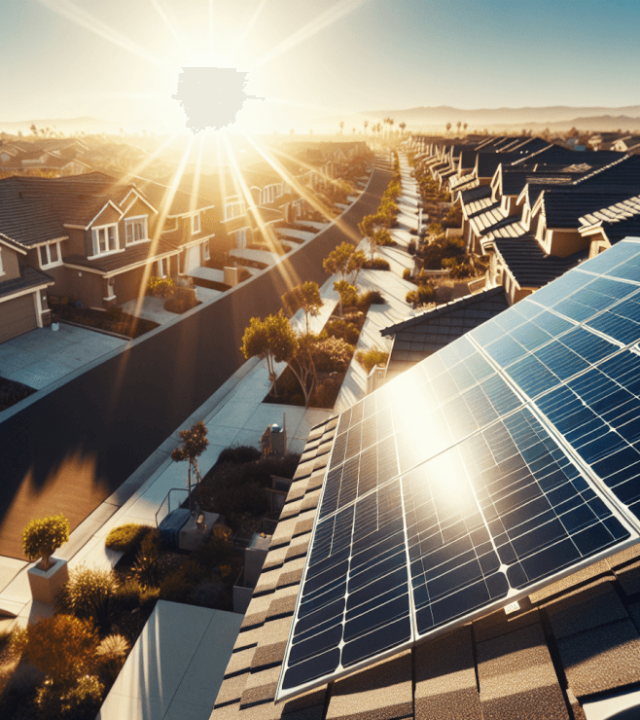Energy Credits

The U.S. energy landscape is undergoing a major transformation, driven by unprecedented federal investment, updated tax credits, and new legislation to promote clean energy and domestic manufacturing.
Tax Credits and Federal Incentives
- Investment Tax Credit (ITC): Allows taxpayers to deduct 30% of the cost of installing solar energy systems through 2032. Steps down to 26% in 2033 and 22% in 2034.
- Production Tax Credit (PTC): Provides an inflation-adjusted, per-kilowatt-hour tax credit for electricity generated from qualifying renewable energy sources like wind and solar.
- Residential Clean Energy Credit: Homeowners installing solar, wind, geothermal, or fuel cell systems can claim a 30% tax credit through 2032.
- 179D Energy Efficient Commercial Buildings Deduction: Offers up to $5.00 per square foot for energy-saving construction or retrofits in commercial buildings.
- Section 45L Energy Efficient Home Credit: Offers up to $5,000 per unit for eligible developers constructing or renovating energy-efficient single-family or multifamily residences.
- 45X Advanced Manufacturing Production Credit: Provides incentives for domestic production of key clean energy components, including solar panels, batteries, and critical minerals like lithium and cobalt.
Federal Programs and Legislation
- Inflation Reduction Act (IRA): A historic $369 billion package designed to boost clean energy, including manufacturing grants, R&D loans, and tax credits for solar panels, batteries, and EV supply chains.
- Qualifying Advanced Energy Project Credit Program: $4 billion in tax credits announced for over 100 clean energy manufacturing projects across 35 states.
- Office of Clean Energy Demonstrations (OCED) Funding: Up to $400 million is available to public and private sector entities launching clean energy pilot projects in rural and remote communities, fostering equitable infrastructure growth.
- ADVANCE Act of 2024: Supports advanced nuclear technology development and modernization of existing nuclear plants, complementing IRA goals for grid reliability and low-carbon power.
- Corporate and Global Market Developments:
- Companies like Meta are exploring nuclear energy partnerships to power AI and data operations.
- South Korean firms are investing heavily in U.S. clean tech manufacturing, incentivized by federal programs, and spurring regional industrial growth.
- These trends are accelerated by strong federal policy support and tax credits that make the U.S. a globally competitive market for clean energy investment.

State Incentives in Florida
- PACE Financing: Allows property owners to finance renewable energy and efficiency improvements through property tax assessments.
- Solar and Energy Loan Fund (SELF): Low-interest loans for homeowners and businesses.
- Net Metering: Credit for excess energy returned to the grid.
- Federal Incentives: 179D and 45L credits apply to eligible Florida-based projects.

State Incentives in Ohio
- Solar Renewable Energy Credits (SRECs): Solar Renewable Energy Credits (SRECs) can be sold to utilities to help meet Ohio’s 8.5% renewable energy standard by 2026.
- ECO-Link Program: Reduced-interest loans for energy improvements.
- PACE Financing: 100% financing through tax assessment repayment.
- Net Metering: Available for both residential and commercial systems.
- Federal Incentives: 179D and 45L credits enhance project cost savings in Ohio.

State Incentives in Minnesota
- Solar*Rewards Program: Performance-based incentive program via Xcel Energy.
- Solar for Schools: Grants for K–12 public schools to install solar.
- PACE Financing: Available statewide to finance renewable and energy efficiency upgrades with long-term, low-interest repayment via property taxes.
- Net Metering: Credits for excess energy production.
- Federal Incentives: 179D and 45L credits available for qualifying energy-efficient construction.
Outlook
Driven by transformative federal legislation like the IRA and ADVANCE Act, increasing private investment (e.g., Meta), and state-level innovation, the U.S. clean energy sector is gaining unprecedented momentum. These programs support Smartland’s mission to align real estate investment with sustainable energy solutions, creating long-term value, advancing decarbonization, and strengthening energy resilience.